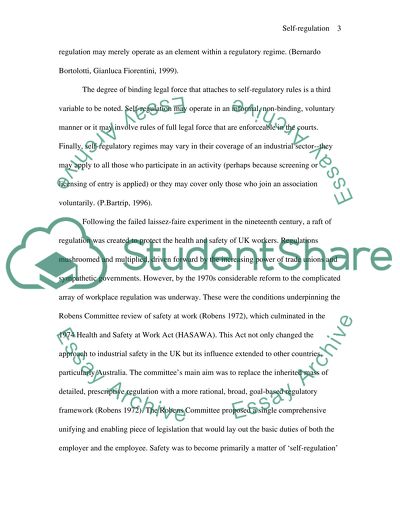Cite this document
(“To what extent has self-regulation always been central to the workings Essay”, n.d.)
To what extent has self-regulation always been central to the workings Essay. Retrieved from https://studentshare.org/miscellaneous/1536816-to-what-extent-has-self-regulation-always-been-central-to-the-workings-of-health-and-safety-legislation-or-is-it-mainly-a-post-robens-committee-development
To what extent has self-regulation always been central to the workings Essay. Retrieved from https://studentshare.org/miscellaneous/1536816-to-what-extent-has-self-regulation-always-been-central-to-the-workings-of-health-and-safety-legislation-or-is-it-mainly-a-post-robens-committee-development
(To What Extent Has Self-Regulation Always Been Central to the Workings Essay)
To What Extent Has Self-Regulation Always Been Central to the Workings Essay. https://studentshare.org/miscellaneous/1536816-to-what-extent-has-self-regulation-always-been-central-to-the-workings-of-health-and-safety-legislation-or-is-it-mainly-a-post-robens-committee-development.
To What Extent Has Self-Regulation Always Been Central to the Workings Essay. https://studentshare.org/miscellaneous/1536816-to-what-extent-has-self-regulation-always-been-central-to-the-workings-of-health-and-safety-legislation-or-is-it-mainly-a-post-robens-committee-development.
“To What Extent Has Self-Regulation Always Been Central to the Workings Essay”, n.d. https://studentshare.org/miscellaneous/1536816-to-what-extent-has-self-regulation-always-been-central-to-the-workings-of-health-and-safety-legislation-or-is-it-mainly-a-post-robens-committee-development.


